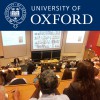From Materials to Cosmology: Studying the early universe under the microscope
The behaviour of the early universe just after the Big Bang is one of the most intriguing basic questions in all of science, and is extraordinarily difficult to answer because of insurmountable issues associated with replaying the Big Bang in the laboratory. One route towards the answer -- which lies at the intersection between cosmology and materials physics -- is to use laboratory materials to test the so-called "Kibble-Zurek" scaling laws proposed for the formation of defects such as cosmic strings in the early universe. Here Professor Spaldin will show that a popular multiferroic material -- with its coexisting magnetic, ferroelectric and structural phase transitions -- generates the crystallographic equivalent of cosmic strings. Professor Spaldin will describe how straightforward solution of the Schroedinger equation for the material allows the important features of its behaviour to be identified and quantified, and present experimental results of what seem to be the first unambiguous demonstration of Kibble-Zurek scaling in real materials. Professor Spaldin will end with some very recent data showing that things might be less unambiguous than they seem.




